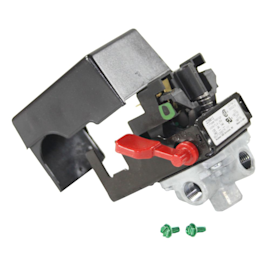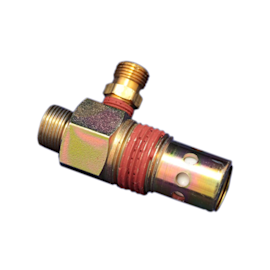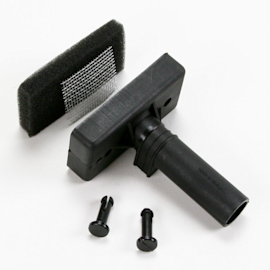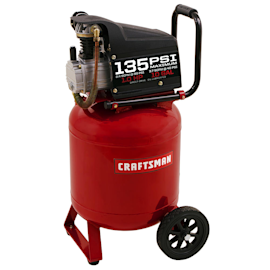How to tell if a fuse is blown


When an appliance in your home stops working and won’t power up, a house fuse could be blown.
You could also have a blown fuse in your riding mower when its battery is good but nothing happens when you turn the ignition key to start the engine.
Determining whether a fuse is blown is one of the first troubleshooting steps you should take when fixing an appliance or riding mower. If you can restore power by replacing the fuse, you can get the product running again in no time.
How to know if a fuse is blown
Checking a riding mower fuse
The fuse in a riding mower looks like a cylindrical car fuse or flat automotive fuse.
The cylindrical fuse has silver ends and it’s transparent in the middle. A thin element runs through the middle of the fuse.
The flat fuse has metal prongs that insert into a fuse holder. The body of the flat fuse is transparent. A thin element runs through the middle of the transparent body.
Locate the fuse in the mower’s wire harness of the riding mower. Inspect the fuse to see if its element is still intact. If the element inside the fuse is burned and separated, removing the fuse and replacing it will restore power to the ignition system.
Use a fuse with the same amperage rating as the original fuse that blew.
If the fuse continues to blow after replacing it, follow the advice in our Troubleshooting a riding lawn mower blown fuse video to find and fix a short circuit or bad component in your mower.
Checking a house fuse
A blown house fuse will prevent the outlet for your appliance from getting electrical power. Check to see if the electrical outlet for your appliance is getting power by plugging a small electrical device such as a lamp or night light into the outlet. If the device doesn’t work, then the house fuse for the outlet is likely blown. If the device works when you plug it into the electrical outlet, then you know that the house fuse isn’t blown because the outlet has power.
Blown fuse in a house
When an electrical outlet in your home doesn’t work, you’ll need to replace a blown fuse or reset a circuit breaker.
Find the fuse box or electrical panel for the electrical outlet in your home. You’ll typically find the electrical panel in the garage or the basement.
While newer homes have circuit breakers, older houses sometimes have fuses preventing damage to wiring and keeping you safe when a short circuit occurs.
If you see circuit breakers in the electrical panel for your home, then resetting the tripped circuit breaker will restore power to the appliance’s electrical outlet.
If you see fuses in your home’s electrical panel, you’ll need to replace the blown fuse to restore power to the electrical outlet for your appliance.
Locate the fuse for the dead electrical outlet. The fuse box typically has labels to make it easier for you to find the fuse you’re looking for.
You’ll typically see round, screw-in fuses in the fuse box. The round fuses will have a sight glass that helps you see whether a fuse is blown. Before you replace the fuse, look at the element inside the fuse to see if it’s blown. If the element inside the fuse is burned and separated, then it’s certainly blown. Unscrew the fuse and remove it. Install a new fuse with the same amperage rating.
If the fuse element is intact, the fuse likely isn’t blown. Because the outlet doesn’t work, you can try replacing the fuse with a new, good fuse in case the existing fuse is bad even though it looks okay. After installing the new fuse, plug in a small electrical device to check the outlet. Although replacing a fuse that isn’t visibly blown seldom restores power to a dead electrical outlet, it’s worth a try.
If the appliance’s electrical outlet doesn’t have power after replacing the fuse (whether it looked good or it was visibly blown), have an electrician examine and repair your house wiring or the electrical outlet.
If the electrical outlet does have power after checking the fuse and replacing it, you can try using the appliance again. If the appliance doesn’t work or the house fuse blows again after you start using the appliance, have a service technician examine and repair the appliance. If you want to try to fix the appliance yourself, follow the advice in our repair help section for your appliance.
Most common symptoms to help you fix your air compressors
Choose a symptom to see related air compressor repairs.
Main causes: loose air tube fitting connections, bad check valve, faulty safety valve, damaged or corroded air tank, bad…
Main cause: bad check valve…
Main causes: tank drain valve open or leaking air, leaky air tank, bad safety valve, worn pump seals, bad pump valve pla…
Main causes: rusted air tank, loose air tube fitting connections, bad check valve, leaky safety valve, bad tank drain va…
Main causes: bad safety valve, pressure switch failure…
Main cause: faulty output air pressure regulator…
Main cause: bad air tank pressure gauge…
Main causes: lack of electrical power, check valve failure, bad pressure switch…
Most common repair guides to help fix your air compressors
These step-by-step repair guides will help you safely fix what’s broken on your air compressor.

How to replace an air compressor pressure switch
You can replace a broken air compressor pressure switch in about 45 minutes. …

How to rebuild an air compressor pump
If the air compressor won't fill the tank with compressed air, rebuild the pump using these steps in about 45 minutes. …

How to replace an air compressor check valve
You can replace a defective air compressor check valve in about 10 minutes.…
Effective articles & videos to help repair your air compressors
Use the advice and tips in these articles and videos to get the most out of your air compressor.

Learn how to tell whether a fuse is blown…

Find out how to reduce air compressor noise.…

See how to perform routine maintenance on your oil-lubricated air compressor.…